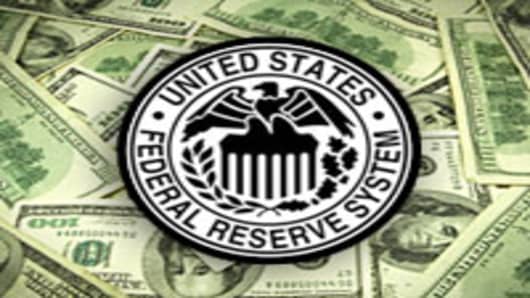The Federal Reserve today released a trove of data on the emergency loans it made under a variety of programs during the financial crisis. The Fed’s data includes details on more than 21,000 transactions with financial companies and foreign central banks.
The data shows an unprecedented level of support for the global financial markets coming from the Fed, implying that the level of financial distress was perhaps even greater than previously understood.
The previously confidential data was required to be made public by a provision of the Dodd-Frank financial reform law. Senator Bernie Sanders, the independent from Vermont, pushed for the provision to require greater transparency on the part of the Fed.
During the course of the financial crisis, the Fed launched a host of emergency programs that added $3 trillion of liquidity to the markets. Although many of the programs have been closed, the Fed still holds many of the assets it purchased.
While the Dodd-Frank law requires transparency for the new programs, it doesn’t require that the Fed reveal which financial companies turned to its traditional discount window during the crisis.
The Fed released information on at least eight different programs today. Below is our analysis of the use of the programs, based on our first reading of the data.
- Term Auction Facility (TAF): One of the first programs launched in an attempt to stem the financial crisis, TAF gave banks access to 28 and 84 day funding starting in December 2007. The Fed would announce a certain amount of funding available and hold an auction in which potential borrowers bid an interest rate to receive the loan in exchange for collateral. The TAF auctions stopped in March of 2010.
The earliest borrowers under the TAF included a host of the foreign banks who borrowed through their US subsidies, including Societe Generale, Banco Santander, Bank of Nova Scotia and Lloyds. Wachovia and Citigroup also borrowed on the first day of the facility.
Bank of America drew on the facility 15 times, beginning with a $2.6 billion 84 day loan on September 11, 2008. It followed this with additional 84 day and 28 day borrowings, bringing its total outstanding up to $45 billion. Wells Fargo also borrowed as much as $45 billion apiece. JP Morgan Chase, by contrast, appears to have only tapped the TAF for $15 billion at any one time. Citigroup also appears to have held down its borrowings to under $20 billion.
- Primary Dealer Credit Facility (PCDF): Created in March 2008 in the wake of the collapse of Bear Stearns, this was an overnight loan facility that provided funding to primary dealers in exchange for a wide range of eligible collateral. The PDCF was intended to relieve pressures in the “repo” market—the overnight collateralized debt market Wall Street firms use to finance their securities portfolio. The goal was to avoid a downward spiral that might occur if a freeze in the overnight funding market forced financial companies to sell off their portfolios in “firesales.” Following the bankruptcy of Lehman Brothers, the Fed expanded the program to accept an even wider range of collateral.
A total of 18 different financial companies borrowed money from the PDCF. If all the loans made are added up, the Fed’s lending appears to reach nearly $9 trillion. That number seems to be inflated, however, by the daily nature of the turnover of loans under this facility. In reality, banks were renewing the PDCF loans each day so that that a far smaller amount was outstanding at any time.
The PDCF was used sparingly prior to the collapse of Lehman Brothers. Citigroup, Morgan Stanley and Merrill Lynch were the heaviest users of the PDCF following the collapse, each drawing from the facility on more than 100 days. This suggests that these firms were under severe distress during the period in which they were borrowing from the facility.
The largest single loan under the PDCF was a $47.9 billion loan to Barclays on September 18 of 2008. Barclays only renewed $16 billion of the loan the next day. By September 30th, it was only borrowing $8 billion. Its final borrowing under the facility came on October 22, when it borrowed just $1 billion.
- Central bank liquidity swaps: The Fed provided liquidity in U.S. dollars to overseas markets to 10 foreign central banks in around 570 transactions. The European Central Bank was one the biggest counter-parties on these swaps, doing multiple swaps worth over $100 billion a piece.
- Commercial Paper: Following the collapse of Lehman Brothers, the Fed also initiated a number of programs meant to provide liquidity to the commercial paper market, including the Commercial Paper Funding Facility and the Asset-Backed Commercial Paper Money Market Mutual Fund Liquidity Facility. Perhaps the biggest news here is how long the Fed felt it had to continue to support this market, with commercial paper purchases continuing into the summer of 2009—after the recession had ended and many believed that the markets had recovered from the crisis.
_____________________________________________________
Questions? Comments? Email us atNetNet@cnbc.com
Follow John on Twitter @ twitter.com/Carney
Follow NetNet on Twitter @ twitter.com/CNBCnetnet
Facebook us @ www.facebook.com/NetNetCNBC



